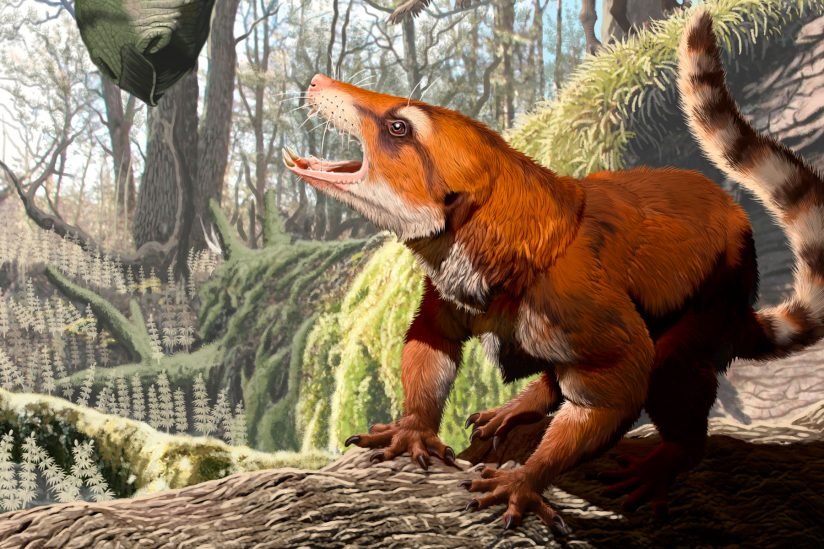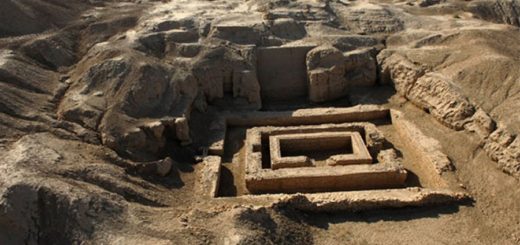130-Million-Year-Old Fossil Gives Evidence That Pangea Separated Later Than Thought
A nearly 130-million-year-old fossilized skull found in Utah reveals evidence that Earth’s ancient supercontinent, Pangea, separated some 15 million years later than previously thought.
The study of this small fossil suggests that mammal migration and that of their close relatives continued during the Early Cretaceous (145 to 101 million years ago).

The new species Cifelliodon wahkarmoosuch is estimated to have weighed 2.5 pounds and probably grew to be about the size of a small hare. (Illustration/Jorge A. Gonzalez)
“Based on the unlikely discovery of this near-complete fossil cranium, we now recognize a new, cosmopolitan group of early mammal relatives,” said Adam Huttenlocker, lead author of the study and assistant professor of clinical integrative anatomical sciences at the Keck School of Medicine of USC.
Scientists used high-resolution computed tomography (CT) scanners to analyze the skull.
“The skull of Cifelliodon is an extremely rare find in a vast fossil-bearing region of the Western Interior, where the more than 150 species of mammals and reptile-like mammal precursors are represented mostly by isolated teeth and jaws,” said James Kirkland, study co-author in charge of the excavation and a Utah State paleontologist.
With an estimated body weight of up to 2.5 pounds, Cifelliodon would seem small compared to many living mammals, but it was a giant among its Cretaceous contemporaries. A full-grown Cifelliodon was probably about the size of a small hare or pika (small mammal with rounded ears, short limbs and a very small tail).
“It had teeth similar to fruit-eating bats and could nip, shear and crush. It might have incorporated plants into its diet. The newly named species had a relatively small brain and giant “olfactory bulbs” to process sense of smell.
“The skull had tiny eye sockets, so the animal probably did not have good eyesight or color vision. It possibly was nocturnal and depended on sense of smell to root out food,” Huttenlocker said.
The study updates the understanding of how mammals evolved and dispersed across major continents during the age of dinosaurs.
“For a long time, we thought early mammals from the Cretaceous (145 to 66 million years ago) were anatomically similar and not ecologically diverse,” Huttenlocker said.
“This finding by our team and others reinforce that, even before the rise of modern mammals, ancient relatives of mammals were exploring specialty niches: insectivores, herbivores, carnivores, swimmers, gliders. Basically, they were occupying a variety of niches that we see them occupy today.”
The study reveals that the early mammal precursors migrated from Asia to Europe, into North America and further onto major Southern continents, said Zhe-Xi Luo, senior author of the study and a paleontologist at the University of Chicago.



 Creators of mankind
Creators of mankind Description of “Tall white aliens”
Description of “Tall white aliens” Where they came from?
Where they came from? About hostile civilizations
About hostile civilizations The war for the Earth
The war for the Earth “Tall white aliens” about eternal life
“Tall white aliens” about eternal life Video: “Nordic aliens”
Video: “Nordic aliens” Aliens
Aliens Alien encounters
Alien encounters The aliens base
The aliens base UFO
UFO Technology UFO
Technology UFO Underground civilization
Underground civilization Ancient alien artifacts
Ancient alien artifacts Military and UFO
Military and UFO Mysteries and hypotheses
Mysteries and hypotheses Scientific facts
Scientific facts


















